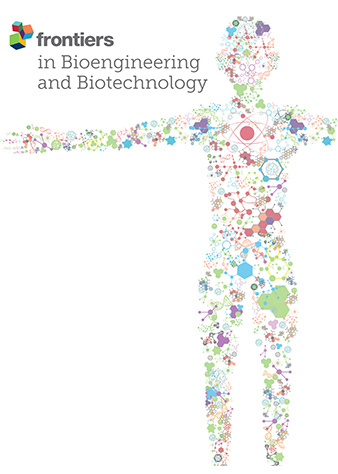间充质干细胞外泌体作为潜在治疗平台的替代品
IF 4.3
3区 工程技术
Q1 BIOTECHNOLOGY & APPLIED MICROBIOLOGY
引用次数: 0
摘要
间充质干细胞外泌体(MSC-EXOs)在组织再生和抗炎方面具有突出的治疗潜力,近年来已成为一种重要的治疗手段。然而,生产率和可重复性较低仍是其实际应用面临的重大挑战。为了克服这些挑战,人们最近研究了各种具有类似干细胞功能的替代材料,但迄今为止还没有对这些替代材料进行全面分析。在此,我们讨论了间充质干细胞-EXOs 替代品的最新进展,包括来自植物、牛奶、微生物和体液等各种生物来源的外泌体和类外泌体纳米颗粒。此外,我们还对每种替代品进行了广泛比较,总结了它们的独特功能和作用模式,从而提出了间充质干细胞-EXOs的预期治疗靶点和未来替代品的开发方向。本文章由计算机程序翻译,如有差异,请以英文原文为准。
Alternatives of mesenchymal stem cell-derived exosomes as potential therapeutic platforms
With outstanding therapeutic potential in the tissue regeneration and anti-inflammation, mesenchymal stem cell-derived exosomes (MSC-EXOs) have emerged as a prominent therapeutic in recent. However, poor production yield and reproducibility have remained as significant challenges of their practical applications. To surmount these challenges, various alternative materials with stem cell-like functions, have been recently investigated, however, there has been no comprehensive analysis in these alternatives so far. Here, we discuss the recent progress of alternatives of MSC-EXOs, including exosomes and exosome-like nanovesicles from various biological sources such as plants, milk, microbes, and body fluids. Moreover, we extensively compare each alternative by summarizing their unique functions and mode of actions to suggest the expected therapeutic target and future directions for developing alternatives for MSC-EXOs.
求助全文
通过发布文献求助,成功后即可免费获取论文全文。
去求助
来源期刊

Frontiers in Bioengineering and Biotechnology
Chemical Engineering-Bioengineering
CiteScore
8.30
自引率
5.30%
发文量
2270
审稿时长
12 weeks
期刊介绍:
The translation of new discoveries in medicine to clinical routine has never been easy. During the second half of the last century, thanks to the progress in chemistry, biochemistry and pharmacology, we have seen the development and the application of a large number of drugs and devices aimed at the treatment of symptoms, blocking unwanted pathways and, in the case of infectious diseases, fighting the micro-organisms responsible. However, we are facing, today, a dramatic change in the therapeutic approach to pathologies and diseases. Indeed, the challenge of the present and the next decade is to fully restore the physiological status of the diseased organism and to completely regenerate tissue and organs when they are so seriously affected that treatments cannot be limited to the repression of symptoms or to the repair of damage. This is being made possible thanks to the major developments made in basic cell and molecular biology, including stem cell science, growth factor delivery, gene isolation and transfection, the advances in bioengineering and nanotechnology, including development of new biomaterials, biofabrication technologies and use of bioreactors, and the big improvements in diagnostic tools and imaging of cells, tissues and organs.
In today`s world, an enhancement of communication between multidisciplinary experts, together with the promotion of joint projects and close collaborations among scientists, engineers, industry people, regulatory agencies and physicians are absolute requirements for the success of any attempt to develop and clinically apply a new biological therapy or an innovative device involving the collective use of biomaterials, cells and/or bioactive molecules. “Frontiers in Bioengineering and Biotechnology” aspires to be a forum for all people involved in the process by bridging the gap too often existing between a discovery in the basic sciences and its clinical application.
 求助内容:
求助内容: 应助结果提醒方式:
应助结果提醒方式:


